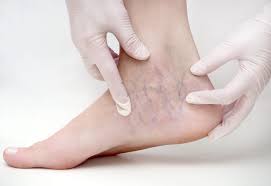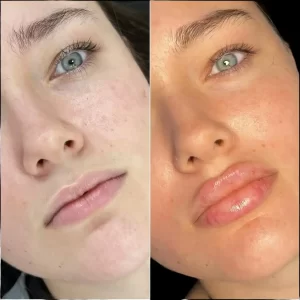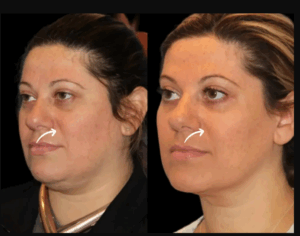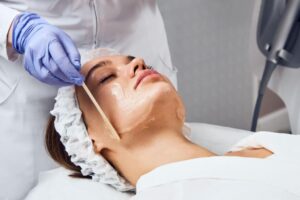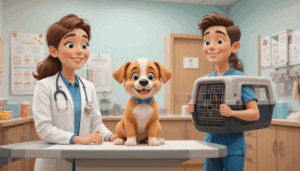Varicose veins are a common condition that makes the veins enlarged, twisted, and visibly prominent. These veins usually occur in the legs but can also appear on other different parts of the body. While these veins are usually considered a cosmetic concern, they still shouldn’t be taken lightly. They can sometimes signal the underlying health issues that may require the attention of professionals.
Millions of people live with varicose veins because they think it won’t do any harm to their health. Leaving them untreated for a long period can further complicate these issues and make them turn into something big. This, as a result, can affect any individual quality of life and prevent them from doing certain activities.
Do you also have varicose veins and are unsure when you should consult with a doctor about it? Then this article will throw light on top signals that indicate the need for a doctor’s appointment.
5 Signs That You Should See a Doctor for Varicose Veins
To prevent dealing with further complications caused by varicose veins, it’s important to get them checked at the right time. There are certain signs that you can pay attention to, to consider a treatment for these veins. These signs include persistent pain or discomfort, open sores or ulcers, bleeding from veins, swelling and skin changes, and also signs of blood clots. This article will further explain these signs in detail, keep reading to learn more.
Here are 5 signs that indicate the need to see a doctor for varicose veins.
1. Persistent Pain or Discomfort
While varicose veins can be uncomfortable they don’t always feel the same and in some cases, people may not even feel anything while having them. But the sign of danger that you shouldn’t ignore is when the pain becomes persistent. This can be a strong indicator that you now need medical attention.
This pain may be a result of increased pressure within the veins or inflammation which can be a sign of underlying problems. If you are experiencing something similar then it’s time to get it checked and treated without delay. To treat these, people book appointments for varicose veins treatment in Dubai which uses an effective procedure to get rid of these veins.
2. Open Sores or Ulcers
In some cases, varicose veins can also lead to the development of ulcers or open sores specifically near the ankles. These are also known as venous ulcers which are usually caused when veins are under pressure. This can impair blood flow and prevent proper healing which can drastically affect quality of life.
Ulcers commonly start as discolored patches on the skin that break open which expose the underlying issue. These can be painful and also prone to infections and slow to heal if left untreated. If you are experiencing these, then it’s best to consult with field experts and have them treated.
3. Bleeding from Varicose Veins
Bleeding can be a sign of danger despite the reason why it happens. However, in the case of varicose veins bleeding must not be taken lightly. These veins are located near the surface of the skin and are prone to injury. Therefore, when a vein ruptures, it can lead to significant bleeding that may be difficult to control.
In some cases, the bleeding can also occur without any injury which is mainly when the skin over the vein becomes fragile. Despite the reason for bleeding, if it’s happening because of these veins, it’s recommended to treat them.
See also: How to Choose a Weight Loss Program for Your Body Type?
4. Swelling and Skin Changes
Another critical sign that most people ignore but can be detrimental is persistent swelling and skin changes. Fluid is caused when blood pools in your veins which leads to fluid buildup in the surrounding tissues. Over time, this causes skin discoloration, thickening, or hardening which is a condition known as lipodermatosclerosis.
Skin changes also include itching, redness, and the appearance of scaly patches which can progress to open sores and ulcers. These signs can further get worse and turn into something more complicated which is why timely treatment is important.
5. Signs of Blood Clot
Some people also experience the presence of blood clots in varicose veins which is known as thrombophlebitis. This is also a serious concern that requires medical attention. Symptoms from this that people experience are redness, pain, warmth, tenderness along the affected vein and sometimes swelling.
In rare cases, these cloths can extend into deeper veins which leads to deeper thrombosis which can be life-threatening. Knowing all this, you should consider varicose veins treatment and get these veins treated to prevent any further complications.
Don’t Let Varicose Veins Affect Your Overall Health
While varicose veins may seem something less concerning in the start they can actually grow into bigger problems. You can get them treated with effective treatments like sclerotherapy. Feel free to make your appointment online and say goodbye to varicose veins with the right procedure.
Read more: Full Body Liposuction Surgery in Dubai Vs Targeted Liposuction Which Is Better

